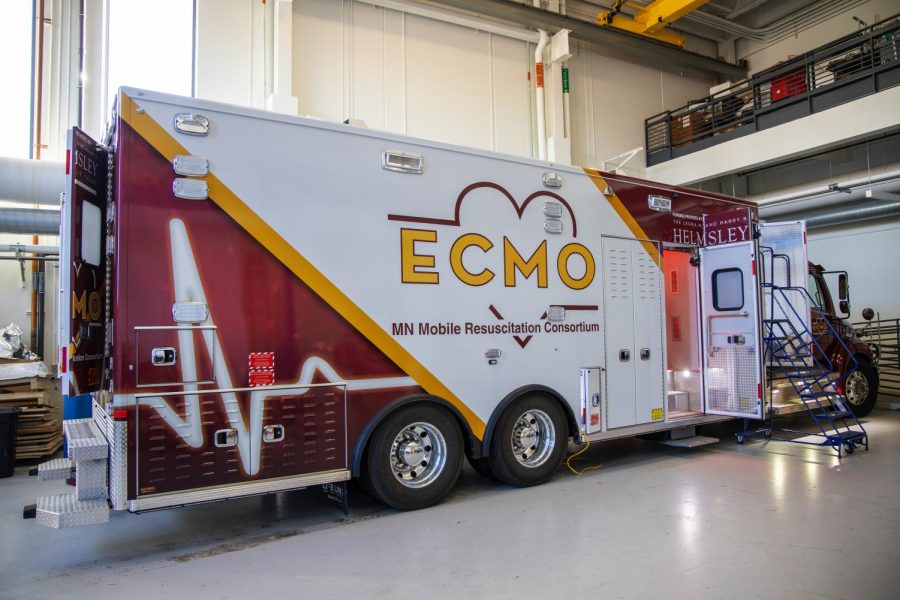Over the past three years, the Minnesota Mobile Resuscitation Consortium (MMRC) at the University of Minnesota has been working on the development of a medical truck aimed at delivering mobile oxygenation procedures for patients with cardiac arrest who have been unresponsive to standard resuscitation procedures.
Dr. Jason Bartos, assistant professor in the division of cardiovascular medicine and president of the MMRC, said the University developed the MMRC in 2015 to provide a meeting place for healthcare resources across the Twin Cities to collaborate together and combat cardiac arrest.
When a patient experiences cardiac arrest, they lose heart function, and standard procedure is to resuscitate them. However, when a patient does not experience a sustained heart rhythm after 30 minutes of CPR, they are in the refractory period where an ECMO machine must revive them.
ECMO, extracorporeal membrane oxygenation, is a procedure where the physician pumps and oxygenates a patient’s blood outside the body, allowing the heart and lungs to rest. The machine is connected to cannula, or plastic tubes, which are placed in large veins and arteries in the legs, neck or chest where they then pump and oxygenate.
Normally, when a patient undergoes cardiac arrest, paramedics bring the patient to the University provided that they are a 30-minute drive away, Bartos said.
But with every passing minute, the likelihood of survival decreases. Bartos said that every ten minutes that go by, the survival rate decreases by 15%-25%.
“The idea was in order for us to treat as many people at any location regardless of the proximity to hospitals, we needed to put the hospital equipment and expertise into something that moves, and that was when the idea for the truck was created,” said Dr. Demetri Yannopoulos, director of the Center for Resuscitation Medicine.
Costing almost $1.8 million, the Leona M. and Harry B. Helmsley Charitable Trust was one of the truck’s primary sources of funding, said Kim Harkins, program manager at the Center for Resuscitation Medicine.
The truck will be a 24-hour service, and physicians will work in 12-hour shifts to provide services day and night. The vehicle includes all of the necessary equipment, such as defibrillators, ventilators, ultrasound machines and more in order to successfully complete the procedures.
Harkins said telemedicine is a critical component of the medical truck as well.
“The telemedicine concept was that once the truck is out there, Dr. Bartos and Dr. Yannopoulos would be able to see everything happening in the truck,” Harkins said. “There are cameras set up near the patient’s head and the cannulation site and a 3D image of the whole truck.”
The physicians can monitor heart signals by pulling up an electrocardiogram more closely while simultaneously being able to look at different views of the patient, Harkins said.
With the elimination of 30 minutes of drive time back to the University in an ambulance, Bartos said the truck could potentially increase survival by 75%.
The MMRC is in the process of training physicians and paramedics and expects to be put to use by the summer of 2021.























